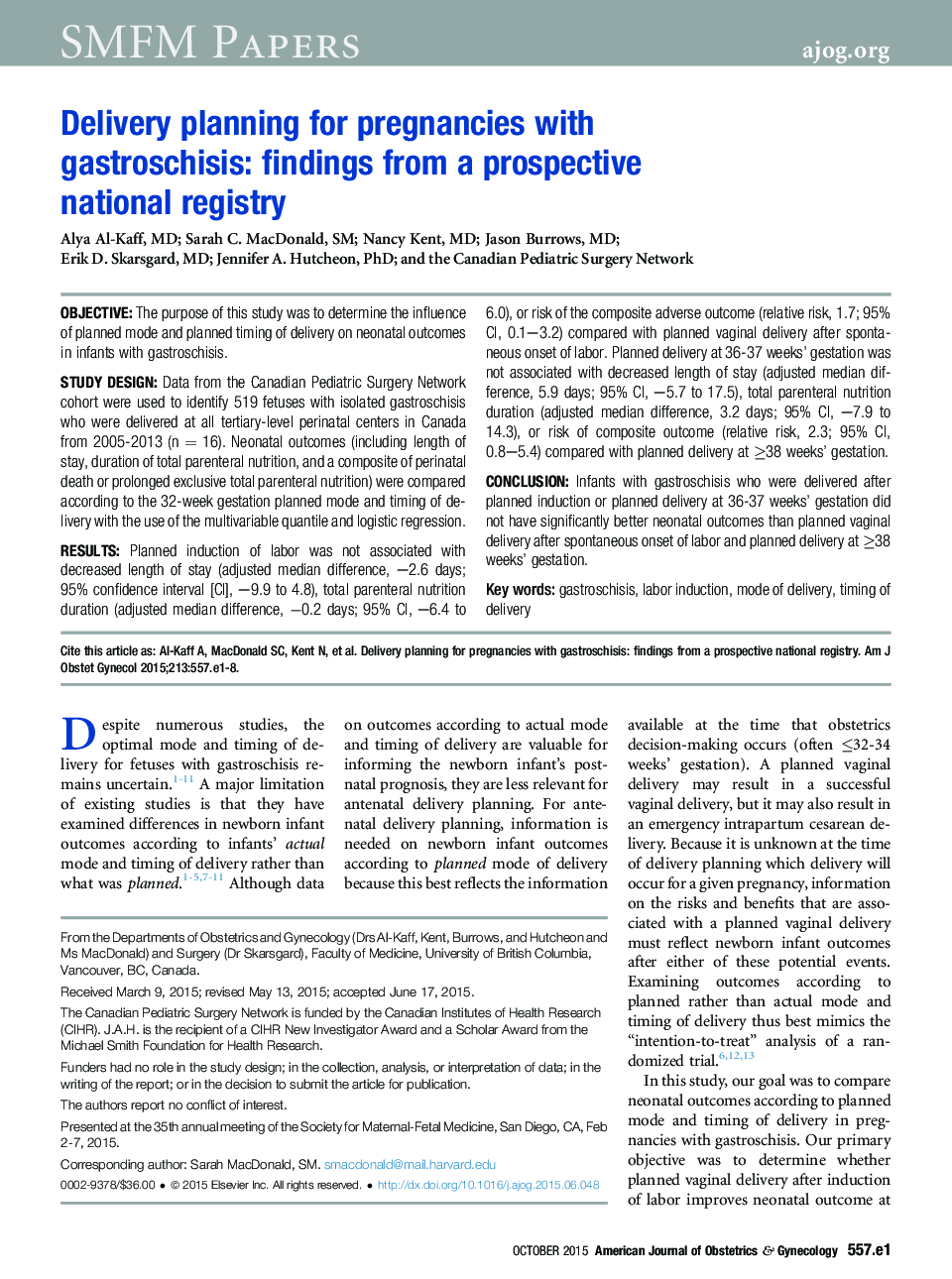| Article ID | Journal | Published Year | Pages | File Type |
|---|---|---|---|---|
| 6144254 | American Journal of Obstetrics and Gynecology | 2015 | 8 Pages |
ObjectiveThe purpose of this study was to determine the influence of planned mode and planned timing of delivery on neonatal outcomes in infants with gastroschisis.Study DesignData from the Canadian Pediatric Surgery Network cohort were used to identify 519 fetuses with isolated gastroschisis who were delivered at all tertiary-level perinatal centers in Canada from 2005-2013 (n = 16). Neonatal outcomes (including length of stay, duration of total parenteral nutrition, and a composite of perinatal death or prolonged exclusive total parenteral nutrition) were compared according to the 32-week gestation planned mode and timing of delivery with the use of the multivariable quantile and logistic regression.ResultsPlanned induction of labor was not associated with decreased length of stay (adjusted median difference, -2.6 days; 95% confidence interval [CI], -9.9 to 4.8), total parenteral nutrition duration (adjusted median difference, â0.2 days; 95% CI, -6.4 to 6.0), or risk of the composite adverse outcome (relative risk, 1.7; 95% CI, 0.1-3.2) compared with planned vaginal delivery after spontaneous onset of labor. Planned delivery at 36-37 weeks' gestation was not associated with decreased length of stay (adjusted median difference, 5.9 days; 95% CI, -5.7 to 17.5), total parenteral nutrition duration (adjusted median difference, 3.2 days; 95% CI, -7.9 to 14.3), or risk of composite outcome (relative risk, 2.3; 95% CI, 0.8-5.4) compared with planned delivery at â¥38 weeks' gestation.ConclusionInfants with gastroschisis who were delivered after planned induction or planned delivery at 36-37 weeks' gestation did not have significantly better neonatal outcomes than planned vaginal delivery after spontaneous onset of labor and planned delivery at â¥38 weeks' gestation.
